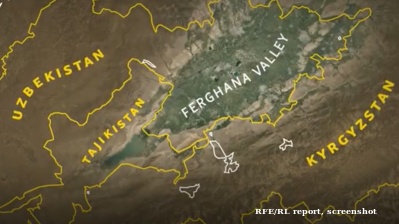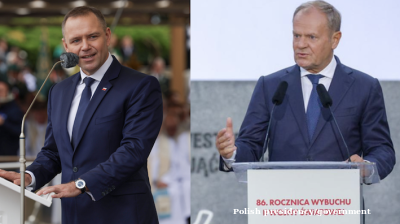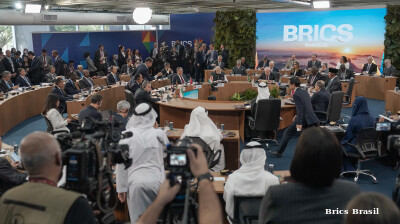India’s military action under Operation Sindoor, targeting sites inside Pakistan occupied Kashmir and Pakistan’s own territory, has triggered a familiar cycle of tension between the two nuclear neighbours. As the world watches for signs of escalation, it is easy to underestimate the potential role of mediation diplomacy in preventing a slide toward open conflict.
Even at the peak of their rivalry the US and Russia, despite divergent interests, have time and again acted as indispensable brokers of stability in South Asia. Launched in response to the killing of 26 civilians in India’s Pahalgam, Operation Sindoor represents India’s most assertive military posture since the Balakot air strikes of 2019.
Unlike that episode, which ended with limited retaliation and fast-track de-escalation, the chatter about the precision strikes from the early hours of May 7 2025 being only the first phase of kinetic action signals a more sustained and visible assertion of cross-border deterrence by New Delhi.
In turn, Pakistan has elevated its alert levels, warned of proportional response options, and framed India’s actions as unjustified aggression. The rhetoric is intensifying, but the presence of experienced mediators in the background may yet prevent a repeat of the catastrophic conflicts of the past. In particular, both the US and Russia retain leverage—political, military, and reputational—that positions them as critical actors in managing this dangerous moment.
Throughout the Cold War and beyond, Washington and Moscow have intervened at key moments to prevent crises in South Asia from spiralling out of control. During the 1965 and 1971 wars between India and Pakistan, both powers—despite operating on opposite sides of the ideological divide—took steps to avert broader escalation. The 1971 conflict, in particular, saw the US and Soviet Union not only backing their respective allies, but also coordinating to prevent the regional war from drawing in China or triggering a direct confrontation between the superpowers.
Moscow’s signing of the Indo-Soviet Treaty of Peace, Friendship and Cooperation that year gave India strategic cover to act against Pakistan, while Washington, though aligned with Islamabad, worked behind the scenes to limit the scope of the conflict. These roles were not neutral, but they were stabilising. In a different context, the Kargil War of 1999 saw the US play a decisive mediation role.
When Pakistani forces crossed the Line of Control into Indian territory, Washington used its influence with Islamabad’s military leadership to secure a drawdown. At a moment when direct dialogue between the neighbours had broken down, the US served as the channel through which de-escalation was not only encouraged, but achieved. These examples offer a blueprint for today’s moment.
While the geopolitical context has evolved, the fundamentals of deterrence and crisis management remain relevant. India’s assertive military confidence and Pakistan’s need to preserve strategic parity create a volatile dynamic—one in which an external stabiliser is not merely useful, but necessary. The US, despite its pivot to the Indo-Pacific and deepening ties with India, retains institutional and defence links with Pakistan.
Its capacity to maintain discrete channels with both sides, particularly at the military-to-military level, enables it to monitor red lines and propose off-ramps. Its global position as a nuclear custodian and security guarantor lends weight to its calls for restraint. Russia, meanwhile, has matured into a more balanced regional player.
Once India’s most trusted security partner, Moscow has in recent years cultivated ties with Islamabad—particularly in the areas of energy cooperation and counterterrorism. This dual engagement provides it with a unique credibility, especially as a non-Western actor that both capitals see as strategically independent. More importantly, both the US and Russia have shown that their engagement in South Asia is driven not by ideological alignment, but by a consistent interest in stability.
For Moscow, regional wars in its extended periphery complicate its broader foreign policy goals and distract from its engagements in Europe and the Middle East. For Washington, a destabilised South Asia undermines its investment in India’s rise as a counterbalance to China and threatens vital trade and energy corridors. This alignment of interest does not imply joint action or formal coordination between the two powers. Rather, it suggests that each, through its own bilateral channels and spheres of influence, can help engineer the conditions for a diplomatic pause. Backchannel negotiations, offers of intelligence-sharing, and temporary confidence-building measures—such as hotline reactivations or pre-notifications of military exercises—are tools they have employed before and could employ again. The appetite for such mediation may be higher than it appears.
India, though averse to third-party intervention in its internal matters, has in the past accepted quiet diplomacy when escalation threatened broader objectives. Pakistan, facing political instability and economic stress, is equally likely to welcome a negotiated off-ramp that preserves its narrative of resistance without requiring costly escalation. Additionally, current global fault lines—such as the war in Ukraine and tensions in the South China Sea—may motivate both the US and Russia to demonstrate their crisis management credibility.
For Washington, defusing the subcontinental standoff reinforces its message of global responsibility. For Moscow, successful mediation enhances its image as a stabilising actor, offsetting criticism of its actions in Europe. The India-Pakistan conflict template since 1947 is one of rapid escalation followed by abrupt de-escalation, often facilitated by outside actors. Operation Sindoor should also fit this mould. What remains to be seen is whether the historical mediators—now operating in a far more complex global order—can replicate past success in a new era.
Features

PANNIER: Tensions creep into rebuilt Tashkent-Bishkek relations as Uzbek border guards shoot dead two Kyrgyz men
What's known indicates victims were gathering medicinal herb unaware they had strayed across frontier.

Kosovo’s flawed electricity market liberalisation leaves businesses in the dark
Companies face disconnections, uncertainty and higher costs, Kushtrim Ahmeti, executive director of the Chamber of Trade and Industry of Kosovo, tells bne IntelliNews.

Poland faces political paralysis as leadership divide deepens
Poland’s mounting conflict between nationalist President Karol Nawrocki and pro-EU Prime Minister Donald Tusk is paralysing governance and undermining credibility abroad.

Raid at Hyundai’s Georgia plant sparks diplomatic tensions
On September 4, 2025, US immigration officers carried out what officials have called the largest workplace immigration enforcement action in the history of the Department of Homeland Security.

_Cropped.jpg)


